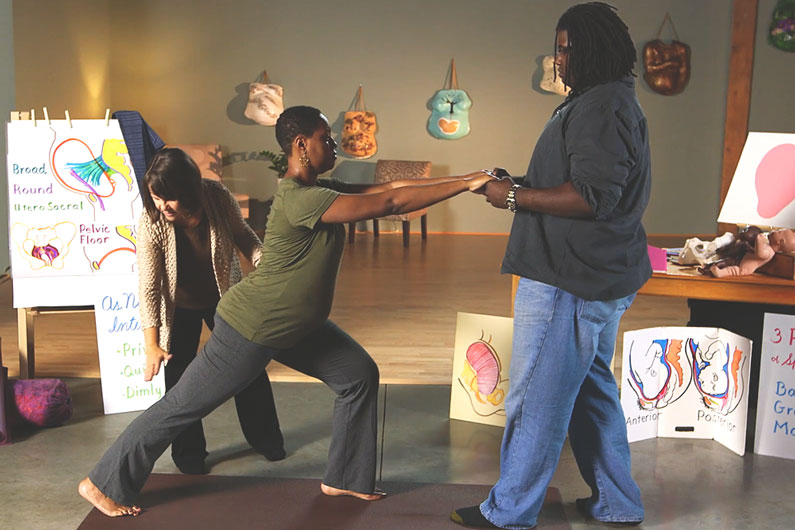Spinning Babies® offers recommendations to prepare for childbirth in pregnancy:
- Increase range of motion
- Balance the body (not too tight, not too loose, not too twisty)
- Movement daily
- Rest Smart
How do we do this?
We do this with our Daily Essentials video. We do this with myofascial releases (the main ones are on our Parent Class video). Providers may like the background and details of the myofascial releases taught by Dr. Carol Phillips in the Better Birth with Body Balancing video.
Daily use of our Daily Essentials and maternal positioning recommendations (on the same video and on the website under Rest Smart) seems to allow a high number of pregnant parents easier births than average. This is even a higher number when matched with the myofascial techniques. Some parents begin at 30 weeks. Others have been doing the daily activities since 20 weeks. How soon do you want to:
- Add calm
- Restore innate body function
- Enhance comfort
Once in labor there are times for the myofascial release as well. These are the same as in Spinning Babies; Parent Class video. Spinning Babies® Aware Practitioners are trained in even more techniques. The goal in late pregnancy and in early labor is: Help baby flex, rotate, and descend – the necessary movements of birth!
The attentive reader of our website will gain a revolutionary amount of information to enhance childbirth. Nurse, midwives, and doctors who are interested in physiological birth are signing up for our provider newsletter – a lesson a week in our Spinning Babies approach. We invite parents themselves, and providers who serve birthing parents to use Spinning Babies in these moments:
- Early labor when contractions are mild and parents are interested in techniques for easing the upcoming labor (yes, this means routine use in early labor for interested birth givers). Early or prodromal labor when pain or anxiety effect a birth givers ability to cope or sleep.
- Spontaneous Rupture of the Membranes (SROM) and no contractions or irregular contractions (dilation is not progressing)
-
Pain or anxiety distressing the birth giver
-
Strong contractions without fetal rotation, descent or cervical dilation
-
Lack of decent even though the cervix is 10 cm
-
Lack of descent when you see the head
We call this Physiology Before Force℠.

